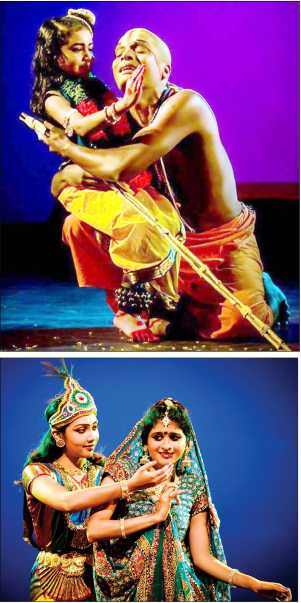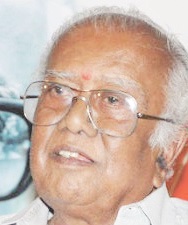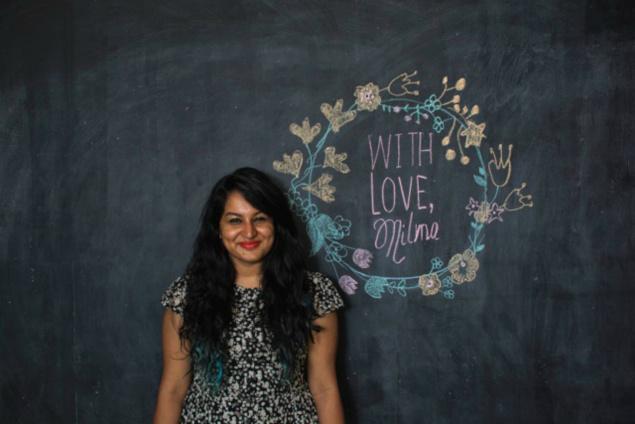Enchanting Evening with ‘Bibi Nachiyar’
Nearly a millennium has passed since Sri Ramanujacharya (ca. 1017-1137) travelled through India, spreading the Bhakti Movement. The year 2017 marks the 1000th birth anniversary of the great Social Reformer, Saint and Guru Sri Ramanujacharya. At a time when the society was gripped with the social evils of untouchability and class based discrimination, Ramanujacharya made history by propounding Equality of all people. The depressed classes (now called Harijans) of the Melukote were of great service to Ramanujacharya and he gave them the right of entry inside the temple which he constructed at Melukote and gave them the name “Tirukkulathaar,” meaning “Children of Lakshmi.” Throughout India he spread the Bhakti Marga. He was an exponent of “qualified non-dualism” known as Vishishta-Advaita. His life and works show a truly unique personality, combining charismatic energy, logical acumen, contemplative insight, catholicity and selfless dedication to God.
At that time the king Krimikanta Chola, in Tamil Nadu, started relentless persecution of Sri Vaishnavas. Though Ramanujacharya was not afraid of the king or of his own death, on his disciples’ insistent prayers, he left Tamil Nadu and travelled to Karnataka. He reached the foot-hills of the Western Ghats, about forty miles west of Mysore. The king of the place was Bitti Deva of the Hoysala dynasty. The Raja’s daughter was possessed of some devil and nobody was able to cure her. Ramanujacharya succeeded in exorcizing the devil and the princess was restored to her former health. The king was very much pleased with Ramanujacharya and readily became his disciple and became a Vaishnava.
“Bibi Nachiyar” was presented as a dance-drama by Sri Vaishnavi School of Dance on 10th January at the Jaganmohan Palace auditorium, Mysuru. The aesthetic sensibility through the entire presentation held our rapt attention. When the programme ended one could not but wonder how the time passed. Generally when a dance programme is presented with recorded music there are glitches and even with live music sometimes the programme does not flow smoothly. It was incredible that the whole dance-drama with recorded music flowed like a taila daara (flow of oil) without a break. Every aspect of this programme was superb. The choreography was so artistic with different patterns formed on the stage by the dancers without confusion; symmetries in the patterns, the use of the entire stage, the graceful movements, statuesque poses, correct postures, footwork and facial and body expression (abhinaya) of the dancers were superb.
The dance-drama opened with a scene from Vaikunta and devotees worshipping Narayana. In a sloka, the Mascha (fish), Koorma (tortoise), Varaha (boar), Namahari and Vamana-Trivikrama avatara episodes were depicted in a crisp, clear and brief manner. Omitting Parasurama, Sri Rama and Balarama avatars, the dancers moved on to show Sri Krishna who becomes the centre of Bhakti Marga. Mithun Shyam appears on the stage as Ramanuja. His expression throughout all the episodes was so serene, and his dance perfect with grace and no excessive movements, portraying a spiritual guru perfectly. Following the instructions of the Lord he goes on to find the Narayana inside the anthill. The tribal people are enjoying themselves in a dance and Ramanuja tells them that they should break the anthill and take out the idol. The tribal people are terrified and ask how they can touch the idol. Ramanuja tells them all are equal before God. The idol is taken out and installed in the temple. The tribal people are allowed to enter the temple and worship the deity. In a vision, Ramanuja is told that the utsava moorthy is with the Sultan’s daughter in Delhi and he should bring it back and install it in Melukote.
The next scene opens with the Sultan’s daughter Mumtaj playing with the idol from childhood and loving the idol. Even after she has blossomed into a beautiful maiden she cannot live without the idol. The Sultan is worried about this and at this time Ramanuja arrives and requests the return of the idol. The Sultan challenges him to call the idol from where he is and Ramanuja calls out endearingly ‘Selva Pillaiye Vaarum.’ The idol, in child form, comes dancing to Sri Rama- nuja and sits on his lap. The Sultan is stunned and allows Ramanuja to take the idol. He returns to Melukote and installs the deity.
The last scene shows the Sultan’s daughter unable to bear the separation from her idol follows Ramanuja to Melukote and Sri Ramanuja allows her to enter the sanctum where she merges with her idol.
“Bibi Nachiyar” enchanted and elevated the audience to a higher plane through its dance and music suffused with Bhakti Bhava. It was an artistic triumph through the grace of Sri Ramanujacharya.
Bharatanatyam, Folk, Kathak and Mohini Attam have been blended without sacrificing the special beauty of each one. The costumes have been designed in a very attractive manner. Bharatanatyam and Kathak (in respective costumes) together, for the same music using ragas common both to Karnatak and Hindusthani systems, depicted the Sultan’s daughter playing and dancing with the idol, the Sultan’s court and the Sultan’s daughter following Ramanuja to Melukote.
Mohini Attam was selected with Mohini costume because Vishnu appeared as Mohini when the Asuras and Devas were fighting over who should get the Amrit. Since Krishna was enticing all beings, Mohini Attam was appropriate. The Raga Ananda Bhairavi selected for Ramanuja’s lyrics was the most suited. It portrayed Peace (Shanti), Dignity (Gambhira) and Confidence. The inspiration for this dance-drama was from Sri Melukote Jeeyar Swami. The script and lyrics were by Smt. Dwaraki Krishnaswami. She along with Balasubramanya Sharma composed the music and the singers were Balasubramanya Sharma and Samanvita. Every one of them and each one of the dancers gave their best for this production. Omkar Sound & Light System provided excellent support. I congratulate all of them on a scintillating and spiritually elevating presentation.
Sri Yathiraja Jeeyar Swamy of Melukote Yathiraja Mutt graced the programme and stayed till the end. He said he has begun going to every nook and corner in India taking Sri Ramanujacharya’s padukas for reviving the Bhakti Movement. Let us be blessed to be a part of it.
—Bhaagavata Paada Renu
source: http://www.starofmysore.com / Star of Mysore / Home> Feature Articles / Wednesday – January 20th, 2016






